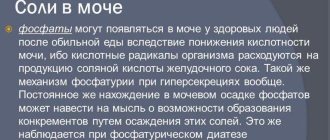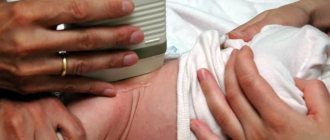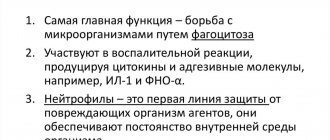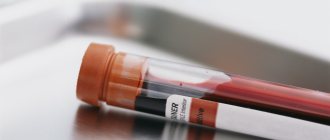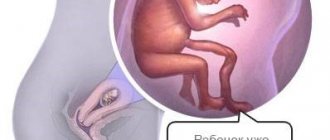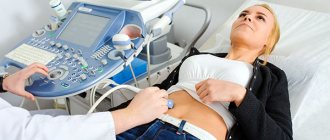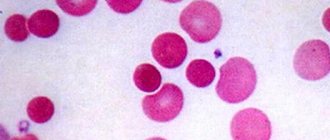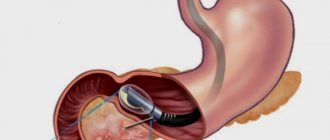Since 2008, in Russia, every baby is required to undergo audiological screening, which makes it possible to promptly identify hearing problems in the baby. Disturbances in the functioning of the organs of sensory perception of the reality surrounding the newborn significantly reduce the rate of its development and are the result of congenital pathologies, infectious inflammation or birth trauma.
Such a diagnostic examination is safe for the health of the newborn and is carried out for all children either immediately in the maternity hospital (or obstetric hospital) or in a children's clinic at the place of residence of the baby's parents. The screening results are entered into the personal medical record. If for some reason such a diagnosis was not performed in the maternity ward immediately after the baby was born, then the doctor does it on an outpatient basis in the medical institution to which the child is assigned at his place of residence.
Concept and components of screening
In the first days after birth, the child should be observed by a neonatologist who conducts a comprehensive neonatological examination. This is necessary to detect hereditary pathological changes in the baby’s body, as well as to identify anomalies at the earliest stages of the child’s development. The sooner any disorders are detected, the more effective the therapy will be.
The mass examination of newborn children includes the following diagnostic stages:
- Examination by such specialized medical specialists as an orthopedist, surgeon, ophthalmologist, neurologist.
- Ultrasound screening.
- Audiological screening.
- Neonatological screening (laboratory testing of blood samples).
A blood test is a fairly common procedure, while audiological screening often alarms parents of a newborn child. However, this procedure is very simple and should not cause any concerns.
Audio screening refers to an examination that allows you to detect pathological changes in the hearing organs using a special medical device.
Audio screening. Examination procedure. Where and how is it carried out?
Audio screening is a mass examination that, since 2008, has been carried out in Russia on all newborns to identify hearing impairments and possibly correct these impairments earlier.
Examination procedure
Audio screening is carried out with a special device called an audiometer. The device is portable, equipped with a flexible probe. An earmold is placed on the tip of the probe and inserted into the child's ear. The procedure is painless.
The device generates test sound pulses, which are transmitted through a probe and microphone into the child’s ear. The inner ear contains outer hair cells that are capable of detecting and amplifying sound vibrations and generating their own sound impulses in response to a sound stimulus. Damage to hair cells leads to sensorineural hearing loss.
The ability of outer hair cells to generate their own sound vibrations is called otoacoustic emission and underlies the operation of a newborn screening audiometer. A few milliseconds after the test sound signal, a sensitive microphone picks up the response sound impulses from the outer hair cells and transmits them along the probe to the recording part of the device. Next, the device analyzes the examination results and displays them on the screen.
There is also spontaneous otoacoustic emission - this type of vibration of the outer hair cells can be recorded without prior sound stimulation. Registration of otoacoustic emission fluctuations by the device allows us to conclude that a person hears normally with this ear.
Otoacoustic emissions are present in newborns from the second day of life, so a hearing examination is carried out on them 3-4 days after birth.
For the examination, it is necessary that the child is fed, calm and motionless. It is most convenient to conduct the examination during sleep. You need to try not to wake the child.
Various reasons may interfere with the examination:
- the child’s anxiety during the procedure, here in some cases the mother’s breast, pacifier or bottle can help, they calm the child, but active sucking during the examination can also create interference,
- Obstructions in the child’s outer ear - blood, mucus, vernix.
Due to such interference, the device may give a false negative result.
The audiometer shows on the screen whether the child has passed audio screening for this ear or not. Its readings can be printed on a printer.
The extract from the maternity hospital must indicate the results of audio screening; normally it looks something like this:
Audio Screening: D (+); S(+)
or D=S (+)
The letter D denotes the right ear, S - the left, a sign (+) that the test is positive and the child has hearing.
If there is a (-) sign, it means that for this ear the device did not pick up sound impulses from the child’s outer hair cells.
Who needs audio screening in a clinic?
- Some children are given a negative screening result when they are discharged from the maternity hospital. But a single negative result does not mean that the child cannot hear.
- For some children, due to health or other reasons, audio screening is not carried out in the maternity hospital.
These children undergo audio screening at 1 month in the children's clinic.
When heading to the clinic for examination, parents need to ensure that the child is fed and sleeps best during the procedure. Take with you a diaper, a pacifier and a bottle of formula.
If there are two negative results of audio screening, this is not reliable evidence that the child cannot hear, but in this case the child must be sent for a full audiological examination to an audiologist.
There are risk groups for hearing loss in children
In the first place is hereditary hearing loss - hard of hearing parents very often give birth to children with the same defect. Therefore, an audiologist monitors children in such families from the first months of life.
In addition, many factors affect the hearing of a newborn during pregnancy and childbirth: viruses, bacteria, drugs, etc.
You can learn more about the risk groups for hearing loss, the numbers on the frequency of detection of hearing loss based on the results of audio screening, as well as the observations of a neonatologist who personally conducts audio screening of newborns in the maternity hospital on the website of Natalya Valerievna Danshina: About the Lukhovitsky Maternity Hospital.
Audio screening is a simple and harmless method; it allows you to select children in need of a full examination by an audiologist at an early age.
But there are still rare forms of hearing loss that cannot be diagnosed using the otoacoustic emission method. This is hearing loss associated with damage or abnormality of the auditory nerve and auditory center of the brain. They account for only 1% of the total number of all cases of sensorineural hearing loss. But still, if the child’s audio screening was successful, and the parents have doubts about his hearing, they should contact an audiologist to undergo a full audiological examination.
mamadoktor.ru
Reasons for the need for
The audiological screening procedure must be taken very seriously, since hearing disorders in children are best treated in the first six months after birth. It is the ability to hear and distinguish sounds that subsequently allows one to recognize speech and learn to speak. If pathologies are not detected in a timely manner, this can lead to the development of complete deafness in the child. In this regard, one should not neglect this examination and the results obtained during it.
The baby did not pass the test: what next?
If the baby has not passed the first audiological screening, there is no need to panic right away: it is not at all necessary that the baby suffers from irreversible hearing loss. There are various reasons that can lead to this result. One of them is the presence of birth fluid in the ear canals, which blocks external stimuli from entering the inner ear, causing the test to fail. Also, this result can be caused by the accumulation of fluid in the chamber of the middle ear, behind the eardrum (this reason is typical for ear infections in children). When these reasons have been eliminated, the baby can take the test again. Therefore, it is advisable to always take into account and have a week in reserve for re-screening (re-screening).
Another possible reason for false results is the excessive noise and movement that a newborn may make during audiological screening. The fact is that the strength of sounds that both SRSM and OAE measure is very quiet. Therefore, any movement during the study, or the crying of a child, can lead to the equipment not working. That is why it is better to conduct the test when the baby calms down or falls asleep. It helps a lot if you feed the baby right before the test.
If the test reveals that the baby has hearing loss, more extensive testing is prescribed to determine the extent to which the child has hearing loss. The main difference between hearing screening and hearing diagnosis is the amount of information that is collected during these tests. For example, if a baby does not pass audiological screening, it is usually unclear whether he really has hearing problems, what degree of hearing loss, whether it is possible to correct the problem, or whether the pathology is irreversible. A diagnostic test can answer all of these questions.
It is clear that a diagnostic test takes longer than a screening test and also requires more interaction between the audiologist and the child. Usually, as a diagnostic test, an expanded version of the SRSM is performed, which uses a larger number of auditory stimuli than during screening. UAE is also carried out in order to confirm the results.
How often should it be done?
The rules establish that audiological screening is necessary twice: three to four days after the birth of the child, and then 1-1.5 months after birth. In some cases, when the results of the first scan are good, a repeat examination is not necessary. The greatest importance is the study of hearing in children born prematurely, as well as those with somatic diseases. This is due to the fact that premature infants are very likely to develop auditory neuropathy and other hearing disorders.
How to test newborn hearing
Typically, audio screening for each newborn is carried out on the 3-4th day of his life in a maternity hospital by a neonatologist using modern medical equipment based on the otoacoustic emission technique, or OAE. Assessing the response of the auditory brain center can also be carried out using electrical impulses - ABR. Both methods are distinguished by:
- detailed accuracy;
- non-invasive and completely safe for the baby’s health;
- high technology.
For diagnostics using the OAE method, a special highly sensitive probe with a safe earmold is used, which is connected to a device that records the reaction of the child’s auditory department. The AVR technique involves the use of electrodes applied to the newborn's head.
If in the first month of the baby’s life the parents did not undergo such an examination in the maternity hospital, then it must be carried out later without fail, until the baby is 3 months old. Audiological screening is usually performed on a sleeping child; silence is maintained in the treatment room at this time.
The choice of technique for conducting audiological screening in newborns depends on the availability of this or that equipment and the preparedness of the specialist who conducts it. Sound can be transmitted using electrical impulses, and the resulting activity of the auditory brainstem is displayed on the monitor of the receiving device. The entire diagnostic procedure takes 5-15 minutes.
Order of conduct
The examination is first carried out three to four days after the baby is born; it is absolutely painless, non-invasive, and harmless to the child. In addition, there are no contraindications to such a hearing test. A neonatologist uses a small audiological screening device to automatically record otoacoustic emissions. The device looks like a small probe equipped with a highly sensitive microphone and a small telephone.
It is advisable to conduct the study between feedings of the child, when he is calm or sleeping. To calm the baby, you can give a pacifier, but during screening it must be removed from the mouth - sucking will create additional noise, which will affect the test result. To obtain the most accurate results, screening should be performed in absolute silence.
The doctor inserts an obturator, or microphone (a special small probe equipped with an earmold), into the child’s external auditory canal. A device is attached to the probe that performs several functions: it delivers sound pulses of different frequencies and registers otoacoustic emissions (sound generated by the hair cells of the cochlea - the receptors of the auditory system). The device sends two signals of different frequencies sequentially into the child's ear, while the device records the reaction of the receptors to this sound. Each ear is tested by a doctor one at a time.
Otoacoustic emissions: what is it?
OAE indicates the proper functioning of the hearing aid and refers to the sound phenomenon that is reproduced by the cochlea of the inner ear. This part of the hearing organ generates low-frequency sounds in response to acoustic stimuli.
Low-frequency oscillations were first recorded back in the 70s of the 20th century. Today, modern equipment allows recording two main types of OAE:
- spontaneous, when sound vibrations occur without acoustic stimuli;
- caused when vibration of the cilia of the living outer hair cells of the cochlea is noted after sound signals.
In turn, caused by OAE is divided into several subtypes:
- delayed evoked, which is recorded after the sound stimulus;
- OAE at the frequency of the distortion product, when a reaction to two tones of different frequencies is recorded at once;
- at the stimulation frequency, when low-frequency oscillations are observed against the background of short-term sound stimuli.
Otoacoustic emissions / computer audiometry - RUB 2,000.
(duration of procedure)
Indications
- suspicion of sensorineural hearing loss due to occupational hazards;
- post-traumatic damage to the sound-conducting apparatus;
- malfunction of the auditory analyzer due to post-infectious complications;
- audiological screening, which is carried out for newborns for preventive purposes;
- use of ototoxic drugs;
- to clarify the diagnosis in young patients who find it difficult to perform audiometry;
- differential diagnosis of hearing impairment and identification of the etiology of noise;
- evaluation of treatment results.
Contraindications
There are no contraindications to the diagnostic procedure.
Varieties
Experts distinguish several types of audiological screening:
- OAE (screening otoacoustic emissions). It is a general examination, a standard diagnosis of the baby’s hearing in the maternity hospital.
- Clinical OAE. This is a more detailed examination performed by an audiologist. Such a study is prescribed for children whose primary OAE was negative.
- SEP (fixation of short-lateral auditory evoked potentials). This technique is an alternative to UAE. During KSVP, more accurate results can be obtained than with UAE.
- ASSR test. It is an objective computer audiometry. This technique is often prescribed as a supplement to CSVP if the child has any abnormalities in the hearing aid by that time. Computer audiometry makes it possible to visually assess hearing thresholds at different frequencies.
Interpretation of results
A simple and safe diagnostic procedure can identify a wide variety of problems associated with a newborn’s hearing. Pathologies can develop in the outer, middle, and inner ear or affect several parts at once.
During screening, you can see one of two results on the monitor of the diagnostic device:
- Pass – means “passed”, which indicates the normal development of hearing and the correct response of the hairs;
- Refer – means “requires direction”, which indicates possible hearing impairment, since the device did not record the oscillatory response of the hairs.
Repeated diagnostics, carried out in the second month of life, can confirm or refute the result obtained in the maternity hospital. If there is no hearing response, the child is sent to a specialized institution for further diagnosis.
Different regions of the Russian Federation set their own deadlines for conducting audiological screening. A number of territorial entities establish a third screening for one-year-old children. Additional testing can help identify a problem that develops gradually, such as hearing loss.
Evaluation of results
The results of audiological screening are immediately displayed on the device monitor. The Refer result indicates that the test did not detect hair cell vibrations, which in turn indicates hearing impairment. If a similar result is obtained, the child is referred for further examination to an audiologist. However, parents should remember that this result does not confirm that the child has hearing loss or another problem.
It often happens that a re-examination of children who have already undergone audiological screening gives a positive result, that is, the presence of pathology is not confirmed. Different experts explain this situation differently. Often the first study gives a negative result due to the fact that the maternity masses have not yet completely emerged from the baby’s ear canals. A repeat examination is indicated 1-1.5 months after the first. If a repeated negative result is obtained, the child is sent for further examination with subsequent treatment.
If the audiological screening gives a negative result twice, the child is advised to be examined by an otolaryngologist, who will give a referral for an extensive examination at an audiological center. It is better to do this before the baby is 3 months old.
Audiological screening of newborns
Particular attention should be paid to children with delayed speech development, including older ones. One more thing is obvious - hearing screening examinations should not be limited to children with risk factors for hearing loss, since it has already been established that 50% of children with hearing impairment do not have a history of risk factors for hearing loss. This means that audiological screening should cover all newborns.
Mass hearing examinations should also be carried out in children's institutions for children with speech disorders and mental retardation, since these disorders have common risk factors with hearing impairment. Studies have shown that 28% of children in speech therapy kindergartens (diagnosed with general speech underdevelopment, dysarthria) have auditory dysfunction. Hearing loss of 1-3 degrees is found in 70% of children with Down syndrome and in 20% of children with autism; hearing pathology occurs in 80% of children with congenital cleft palate.
The joint work of employees of the SP Research Institute of ENT, St. Petersburg City Children's Deafness Center, and the Institute of Early Intervention in these areas contributed to the fact that children with moderate hearing loss and neurological disorders began to be sent for diagnostic examination earlier. And, as a result, they began to be diagnosed with hearing impairment earlier.
Among the recommendations, a special place was occupied by the need to introduce hearing examinations in children using objective methods in hospitals for newborns, since children who require intensive care in the first days and months of life are 10 times more likely to have hearing impairment. At the same time, there is an increase in the number of children with congenital hearing impairments due to an increase in the pathology of pregnancy and childbirth, as well as as a result of the achievements of modern medicine, ensuring the survival of very premature children and children with developmental anomalies.
Currently, audiological screening using an objective method - registration of evoked otoacoustic emissions - is being introduced in Russia. According to the state program, maternity hospitals are equipped with the necessary equipment, and specialists from three leading centers - the Federal State Institution St. Petersburg Research Institute of Ear, Throat, Nose and Speech, the Federal State Institution Russian Center for Audiology and Hearing Prosthetics and the Federal State Institution Research Institute of Otorhinolaryngology - train maternity hospital staff to conduct audiological screening of children using this equipment .
Long-term observations in our country and abroad indicate that audiological screening should be carried out in newborns in maternity hospitals. Moreover, the optimal method in this case is to register evoked otoacoustic emissions. This method allows you to detect even slight hearing loss, regardless of whether it is conductive or sensorineural hearing loss. Audiological testing of newborns in maternity hospitals using the UAE registration method is recommended to be carried out no earlier than the 4th day of life, since in some children it is not registered in an earlier period.
A special situation is presented by audiological screening in hospitals for newborns, where premature babies and children with various somatic diseases are kept for a long time. Registration of auditory evoked potentials is also necessary here. The fact is that these children not only have a significantly higher incidence of hearing impairment, but they are also more likely to develop auditory neuropathy. If only otoacoustic emissions are used, then such children are mistakenly diagnosed as having normal hearing. In neonatal pathology departments, it is advisable to conduct audiological testing before the child is discharged from the hospital.
If there is a negative result, audiological screening should be repeated (4-6 weeks after the initial screening). A negative result of the initial screening is the absence of otoacoustic emissions or the absence of auditory evoked potentials at the threshold level of stimuli (35-40 dB for different devices) for one or both ears.
If the result is negative again, the child is sent for a diagnostic hearing examination to a children's audiological center (regional, regional or republican). Moreover, a diagnostic examination should be carried out in the first 3 months of life.
Repeated hearing examination should also be recommended for newborns who successfully passed screening in the maternity hospital, but were then hospitalized in the neonatal pathology department due to hyperbilirubinemia.
The introduction of audiological screening of newborns in our country should allow us to get closer to modern standards in the field of care for children with hearing impairments:
- Detection of hearing impairment immediately after birth.
- Diagnosis of hearing impairment (determining the type of hearing impairment, the level of damage to the auditory system and the degree of hearing loss) up to the age of 3-4 months.
- Hearing prosthetics in the presence of hearing thresholds in the speech range of more than 40 dB at the age of 2 months.
- Carrying out the necessary therapeutic measures.
- Early habilitation - classes of the child and parents with a teacher of the deaf on the development of residual hearing, communication skills, speech, mental functions, motor skills - from the moment of detection of auditory perception disorders.
- Cochlear implantation is electrode hearing prosthetics for children with deafness and grade 4 hearing loss in the absence of effectiveness from adequate hearing aid prosthetics (starting from the age of 1 year).
Studies have shown that if children with 3-4 degrees of hearing loss are fitted with hearing aids before the age of 6 months, then their speech and language development, including the accumulation of passive and active vocabulary, mastery of the grammatical system of their native language, will be the same as in normal hearing children.
If children are put on devices after 6 months, then even with the most effective correctional work, the child will still lag behind in speech development. Thus, the introduction of audiological screening of newborns using otoacoustic emissions in Russia is certainly an important stage. But this is only the first stage in the early habilitation of children with hearing impairments. How many cities have centers equipped with modern diagnostic equipment and personnel who can competently carry out differential diagnosis of hearing impairment in children under 6 months of age? Our experience shows that there are still very few such centers. There are even fewer specialists who know how to provide prosthetics for children of this age. There is a catastrophic shortage of teachers of the deaf who have skills in rehabilitation work with young children. And most importantly, many experts still believe that hearing aids for children can be delayed until 1 - 2 years, and classes with a child can only begin at 3 years old in a special kindergarten for children with hearing impairment.
But the most intensive development of the auditory pathways and centers, as well as the brain, occurs in the first 1.5 years of a child’s life! And today we know the methods of hearing aids and the development of hearing and speech in deaf children, starting from the first months of life.
Therefore, in our opinion, the audiological screening program will “work” if not only maternity hospitals are equipped with modern high-quality equipment, but also specialists update their ideas and knowledge about the possibilities of early rehabilitation.
It depends on us, specialists, whether a deaf child will have a chance to learn to hear and speak like normal hearing children.
| I.V.Koroleva, professor of the Russian State Pedagogical University named after. A.I. Herzen (Department of Deaf Pedagogy), St. Petersburg Research Institute of Ear, Throat, Nose and Speech, St. Petersburg Medical Academy of Postgraduate Education (Department of High Technologies in Otorhinolaryngology and Speech Pathology) |
Risk factors
Experts identify several risk factors for pathological changes in hearing and hearing loss in newborns:
- Rhesus conflict.
- Asphyxia of the child during childbirth.
- Post-term pregnancy.
- Prematurity, insufficient body weight in a child at birth.
- Diseases of an infectious, viral nature suffered by the mother while carrying a child.
- Frequent toxicosis during pregnancy.
- Compounded heredity – complete absence or hearing impairment noted in close relatives.
Children at risk are required to undergo a thorough examination by an audiologist, since they are most susceptible to the development of hearing pathologies.

